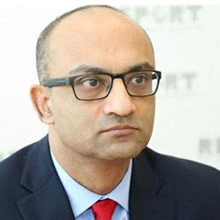
It’s a cold spring day in Baku, and several students from Azerbaijan State Oil and Industry University (ASOIU) are huddled around a laptop trying to project an image onto their classroom wall.
Once the image is projected, one of the students “writes” on the surface of the classroom wall – as he would on the computer screen – using customized software called CamTouch, which allows the user to turn any surface into an interactive “smartboard”. The student also selects an icon and virtually opens a document with the help of a special stylus.
Along with several other innovative apps, the CamTouch software was developed by ASOIU students, with support from the university’s eaziSTART innovation and start-up center. ASOIU is one of several universities in Azerbaijan that run innovation centers and business incubators to help students and researchers take their ideas from the drawing board to the marketplace.
Similar innovation hubs in Azerbaijan’s private sector include the Barama Innovation and Entrepreneurship Center and the High Technologies Park (at the National Academy of Sciences). In total, about 18 incubation centers currently operate throughout the country.
From Silicon Valley to Singapore, world-class research universities have been drivers of innovation and economic growth. In Azerbaijan, however, despite its budding innovation ecosystem, higher education institutions (HEIs) lag behind those of other countries in producing and commercializing impactful research.
A recent World Bank policy note identified a number of challenges facing HEIs and offered recommendations on how to strengthen their role as drivers of innovation and entrepreneurial growth.
One of the main obstacles facing HEIs in Azerbaijan is the relatively low level of expenditure on research and development (R&D). Since 2015, R&D investment accounted for only 0.2 percent of Azerbaijan’s GDP, compared to 1.1 percent in Russia, 2.5 percent in the OECD area, and 4.3 percent in Israel (the highest in the world).
Only 10 percent of Azerbaijan’s R&D spending goes to HEIs and only one-third of that amount finances applied research. In contrast, countries of comparable size - like the Czech Republic, Portugal, and Austria - allocate between 68 and 81 percent of R&D funding to applied research, which can be more readily commercialized than basic research.
One of the key recommendations in the policy note is that Azerbaijan expand its use of competitive funding mechanisms and direct more competitive research grants toward HEIs (or consortia composed of universities, research institutes, and industry). In Kazakhstan , Uzbekistan and Montenegro, for example, recent expansion of competitive research funding has been used effectively to enhance university innovation capacities.
Another recommendation is to set-up effective technology transfer offices (TTOs) within HEIs and encourage universities to develop their own “commercialization agendas”, which would go a long way toward supporting students and researchers in developing market-relevant solutions.
Policymakers in Azerbaijan can provide additional support for entrepreneurship education and innovation infrastructure, by promoting the use of “Fab Labs” within HEIs so that ideas can be turned into prototypes, setting-up a national research equipment registry, and promoting shared access to innovation equipment by multiple stakeholders.
Creating world-class research universities does not happen overnight, of course. Fortunately, many of the necessary building blocks are already in place in Azerbaijan, and the recent Decree of the President of Azerbaijan is a step in the right direction.
We look forward to continuing our support to the Ministry of Education in its goal to turn Azerbaijan’s universities into drivers of innovation and economic growth.



Join the Conversation